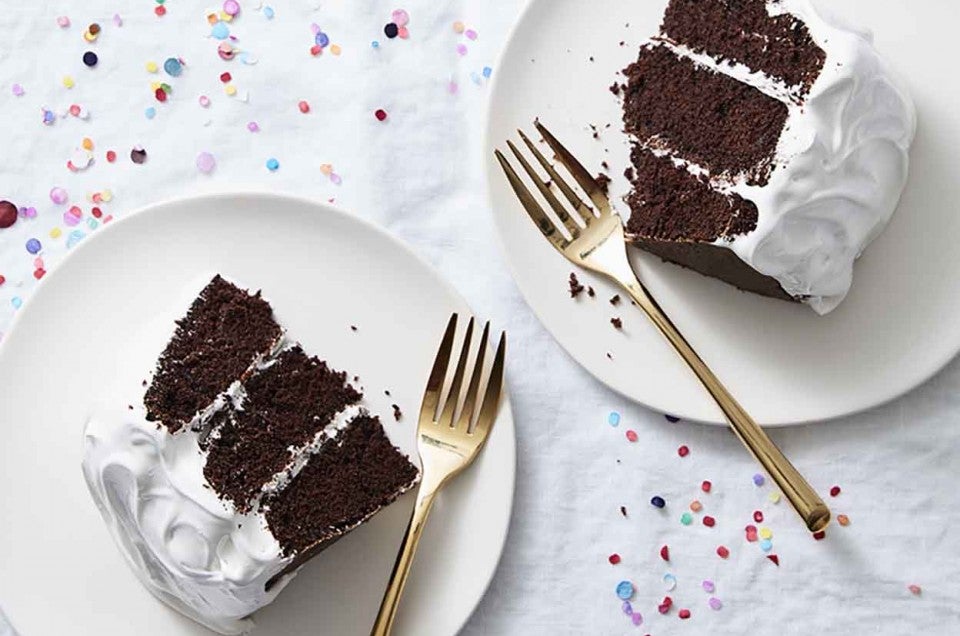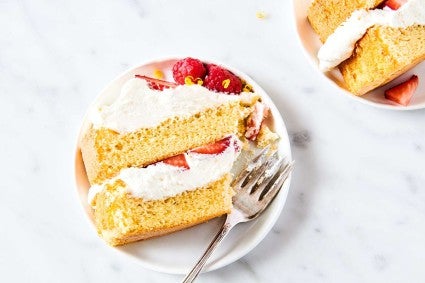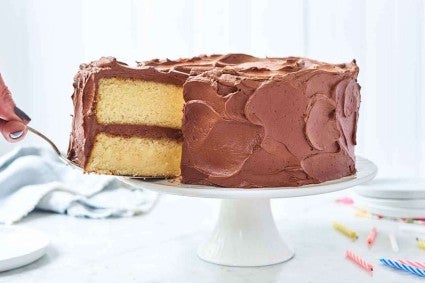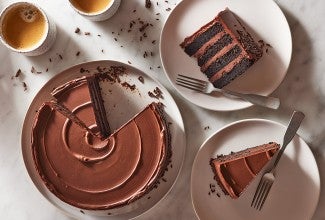The key to making a cake with the moist texture of a boxed mix
A little oil is the answer.


Cake may seem eternal, but cake as we know it today is a relatively recent creation. Like any food, it, too, is subject to changes in technology and trends. Over the decades, styles have risen and fallen: Today, the ultimate (and nostalgic) ideal for many of us is the rich flavor and never-dry texture of cakes made from a boxed mix.
Before commercially made, consistent chemical leaveners (that’s baking powder and baking soda to you and me) came on the scene, two styles of cakes dominated: Rich old-fashioned pound cakes (a delicious but dense affair) anchored one end of the texture spectrum, with light, airy foam cakes like angel food or genoise, which get their loft from beaten egg whites, on the other.
And in the middle were cakes made by whipping the egg whites separately, then folding them into a butter-based batter for a more open crumb. You can still make a cake this way, but it’s more work (and more dishes). Plus, butter cakes that aren’t soaked with a flavoring syrup can get dry pretty quickly.

Cake preferences changed yet again when cake mixes first appeared in the 1930s and subsequently skyrocketed in popularity after the Second World War. Thanks to specialized ingredients like hydrogenated vegetable shortening, box cakes remained moist, with a soft, buttery crumb, yet were sturdy enough to stack in layers.
For many bakers, the tender-crumbed texture of a box cake is now the cake ideal. Consistent success keeps fledgling bakers coming back to the kitchen. But what if I told you that you can achieve that same texture in a scratch-baked cake, along with better flavor?
Over the 20 years I’ve been writing recipes for King Arthur, I’ve seen the cakes in our online archives reflect this evolution of a cake’s ideal texture. The recipes for several of our butter cakes have been reformulated to include an ingredient that prevents cakes from getting too dry too fast: We’ve replaced 25% to 50% of the butter in them with vegetable oil.
The first time I made this move was in this Chocolate Cake. It’s made plenty of appearances at weddings and occasions of all sorts since, and I make this recipe more than any other chocolate cake in my arsenal.
There’s a bit of oil in our Lemonade Cake and Classic Birthday Cake. Our Favorite Fudge Birthday Cake gets its fork-friendly texture from oil and a bit of Instant ClearJel (a food starch that hangs on to the liquid in the batter to ensure moist texture).

What’s going on here? Why does oil give cake superior texture? Butter is 18% water, so when the batter is baked, some of its liquid evaporates. Replacing the water from the butter with oil means there’s more fat left in the cakes to ensure tenderness. It also coats the flour uniformly, which keeps the layers from being tough even if the batter is overbeaten.
If you have a traditional all-butter cake that you’d like to see last a little longer on the counter without drying out, try substituting vegetable oil for 25% of the butter amount by volume. (Be aware oil weighs less than butter, so weight will be different.) Add it with the butter and sugar, then cream the mixture as you normally would.
I also recommend checking out the headnotes on this Back-to-Basics Yellow Cake, which addresses the transition from “traditional” butter cake to formulas adjusted with some oil.
See how you feel about the results. You’re likely to discover the Holy Grail of cake: A scratch-made creation that tastes great, with a tender crumb that rivals anything from a box.
Cover photo (Chocolate Cake) by Mark Weinberg.


